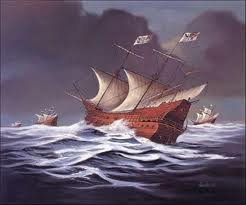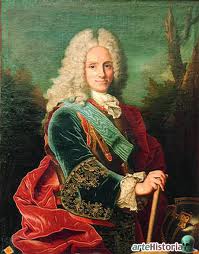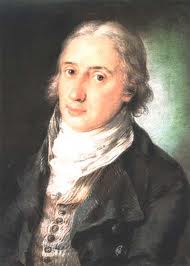Spanish Enlightenment Drama
While the territorial extension of the Spanish Empire would remain largely unchanged up until the first quarter of the XIX century, Spain's role as a powerful player in military, political and even economic terms declined steadily, and rather sharply, from the middle of the XVII century onwards. This decline was also palpable in the theatre productions of the Spanish Enlightenment.

A number of events took place during the 1600s that dramatically eroded the influence of the Spanish Empire in worldly affairs, beginning with the capture of the Spanish Treasure Fleet, on its way from Cartagena to Santo Domingo, by the Dutch navy in 1628. From that point forward Spain gradually lost hold of a number of islands in the Caribbean to the English, the Dutch and the French.
Additionally, the participation of the ruling Habsburg dynasty in extensive wars against the Ottoman Empire, its involvement in the Thirty Years' War, into which Spain was officially dragged in 1635, and the ongoing conflict against the Dutch Provinces, which had started all the way back in 1581, meant that the great majority of the resources arrived from the New World were wasted in armed conflicts.
By 1648 the Peace of Westphalia had given a legal basis to the Dutch Republic's de facto independence from Spain, and, even though in terms of the Spanish theatre the end of the Golden Age is often linked with the death of Calderon de la Barca in 1681, in reality the sphere of influence of the Spanish Empire had been greatly reduced already 20 years earlier, with the signing of the Treaty of the Pyrenees.
Spanish Theatre in Bourbon Spain

The turn of the century saw Europe once again immersed in raging wars. One of them involved the successor to the Spanish throne, following the death of Charles II of Spain, who would ultimately be the last Habsburg ruler of Spain. The long conflict lasted over a decade, and it would not be until 1712 that the country would finally be pacified, under the rule of Philip V, the new Bourbon king.
Evidently, the instauration of a new monarchy in the country brought with it major changes to the social and the political structure. Understandably Francophile, Philip adopted the French way in a number of aspects – political, social, and so on. Artistically, this was particularly evident through the establishment of the Academy, the compilation of an official Spanish Dictionary and the insitutionalisation of art. It was the beginning of the Spanish Enlightenment.
Speaking specifically about Spanish theatre, initially the art was slightly neglected. This came, partially, as the taste of the time shifted its focus towards essays and treatises that dealt with issues germane to the human reason. Added to this, there was certain degree of rejection among the general public towards the Baroque aesthetic, under which Spanish theatre had thrived so much.

As the XVIII century unfolded, however, and the regency of the Bourbon family gained its own identity, a new artistic tendency gained great favour in Spain: it was the advent of the Neoclassical style, so predominant in French society, which would find its most accomplished exponent in Leandro Fernández de Moratín, the name of reference during the Spanish Enlightenment.
More than a century had gone by from the end of Calderon's work to the first of Moratín's plays, El viejo y la niña (1790) and so much is evident in the sharp contrast between the two styles. Moratín's theatre is moralistic and puts emphasis on a clear and refined language. What is more, he goes back to the classical precepts of drama, bringing the Spanish theatre back to the unitary conceptions of time, space and structure.
Madrid had changed, and its population with it, becoming something much closer to what you would experience in the city nowadays. It had become a less self-assured place, a place that looked outwards to find the ideals by which to govern their lives.
And Moratín, with his intellectual sensibility, turned out to be the perfect interpreter of French refinement, bringing the theatre back to during the Spanish Enlightenment, a period that had seen a drastic decline in the cultivation of the art.
